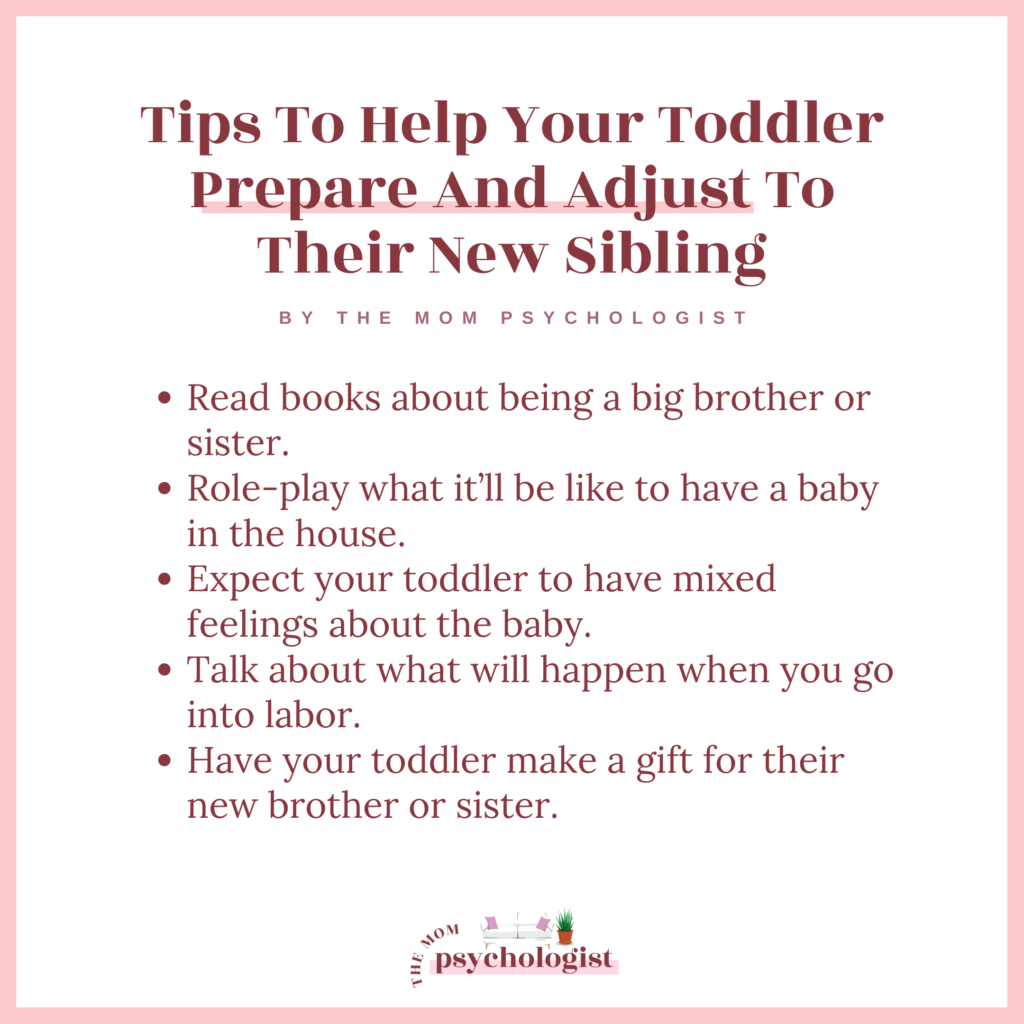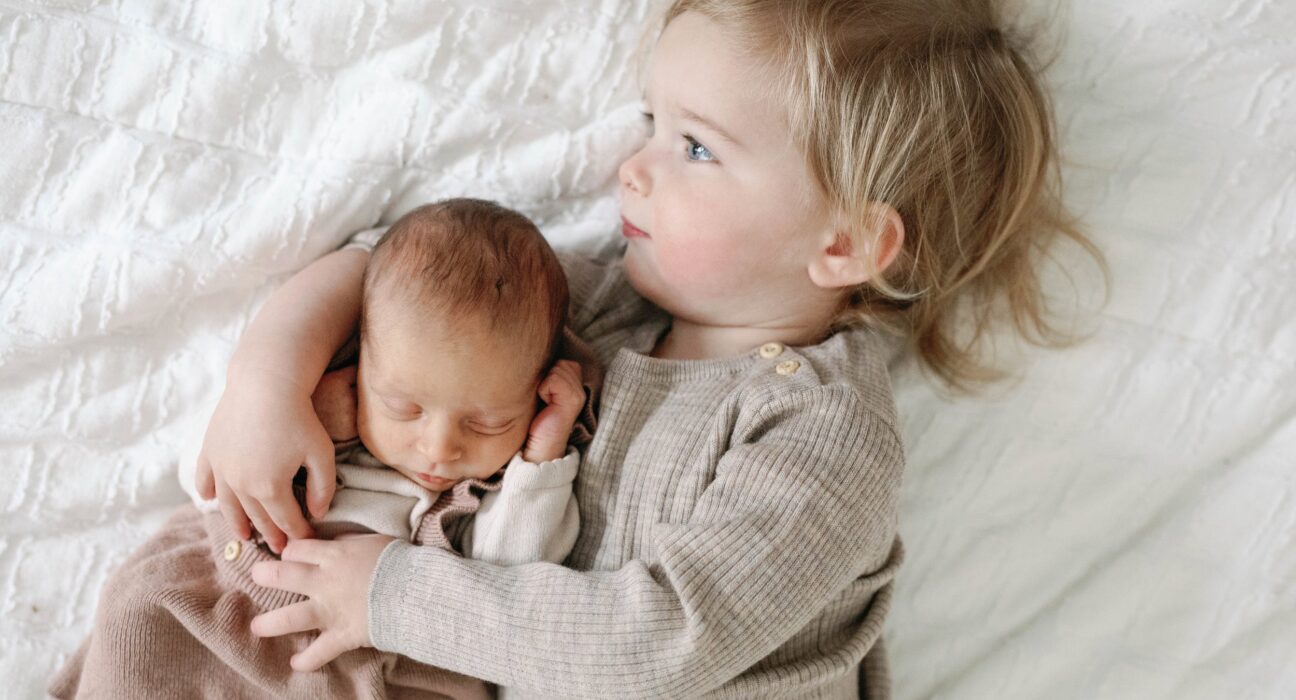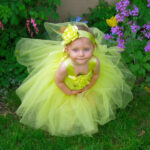To prepare your toddler for a new sibling, discuss the changes that will happen and involve them in preparations. Use books or play to introduce the concept of a baby sibling.
Welcoming a new baby can be exciting yet challenging for a family, especially for a toddler. As they adjust to this significant change, it’s essential to help them understand what to expect. Toddlers may feel a mix of emotions, from excitement to jealousy.
Preparing them in advance can ease their transition and foster a positive relationship with the new sibling. Engaging your toddler in discussions and activities related to the baby will make them feel included. This proactive approach can help your child embrace their new role as a big sibling, ensuring a smoother adjustment for everyone involved.
Table of Contents

Credit: themompsychologist.com
Introduction To Sibling Prep
Preparing your toddler for a new sibling is important. It can help them adjust to changes. Sibling prep sets the stage for a smooth transition. This journey can be exciting and challenging. Understanding what to expect makes it easier for everyone.
Setting The Stage
Creating a welcoming environment is key. Here are some ways to set the stage:
- Talk Openly: Share your excitement about the new baby.
- Involve Them: Let your toddler help with baby preparations.
- Read Books: Choose stories about new siblings.
- Practice Roles: Play pretend as a big brother or sister.
Make your toddler feel included. This helps them feel important. Celebrate their role as a big sibling.
Expectations For The Transition
Every child reacts differently to a new sibling. Here are common feelings to expect:
| Feeling | Description |
|---|---|
| Excitement | Your toddler may feel happy about the baby. |
| Jealousy | They might feel left out at times. |
| Curiosity | Your toddler may ask many questions about the baby. |
Prepare your toddler for these feelings. Discuss what they might expect. Reassure them that love will not change. Create bonding moments with the new sibling. This helps build a strong connection.

Credit: takingcarababies.com
Timing The Announcement
Announcing a new sibling is an exciting moment. Timing is crucial to help your toddler understand. Choose a moment that feels right for your family. The right timing can make the announcement easier for your child.
Choosing The Right Moment
Pick a calm time for the announcement. Avoid stressful moments like bedtime or mealtime. Here are some tips:
- Choose a quiet day at home.
- Wait for a moment of connection.
- Consider your toddler’s mood.
Use a fun activity to share the news. This can help your toddler feel excited. You can also make it a game. Use toys or drawings to illustrate the idea of a new sibling.
Age-appropriate Explanations
Explain the news in simple words. Use language your toddler can easily understand. Here are some suggestions:
| Age Group | Explanation |
|---|---|
| 1-2 years | Say, “Baby coming soon!” |
| 2-3 years | Use a doll to show a baby. |
| 3-4 years | Talk about sharing toys and love. |
Use stories to explain the changes. Books about new siblings can help. Make the information fun and engaging.
Books And Stories
Books and stories can help prepare your toddler for a new sibling. They provide a fun way to explore feelings and expectations. Engaging stories can ease anxiety and foster excitement.
Selecting Sibling-themed Books
Choosing the right books makes a big difference. Focus on stories that celebrate new siblings. Look for books with colorful illustrations and relatable characters.
- Classic Titles: Books like “The New Baby” by Mercer Mayer.
- Modern Favorites: “I Am a Big Brother” by Caroline Jayne Church.
- Interactive Stories: Choose books with flaps or textures.
Read reviews to find the best options. Look for books that address emotions. This helps your toddler understand their feelings about the new baby.
Storytelling Techniques
How you tell the story matters. Use storytelling techniques to engage your toddler. Make it fun and interactive.
- Use Expressions: Show excitement in your voice.
- Ask Questions: Involve your toddler in the story.
- Act It Out: Use toys to reenact scenes.
Encourage your toddler to share their thoughts. This helps them process emotions. Make reading a daily routine to build anticipation for the new sibling.
Involving Your Toddler In Preparations
Preparing for a new sibling can be exciting yet challenging. Involving your toddler in the process helps them feel important and included. It eases their transition and builds a strong bond with the new baby. Here are some effective ways to include your toddler in preparations.
Simple Tasks For Involvement
Let your toddler help with small tasks. This creates a sense of responsibility and excitement. Here are some simple tasks they can assist with:
- Choosing baby clothes: Let them pick out outfits.
- Setting up the nursery: Involve them in arranging furniture.
- Preparing a welcome home sign: They can decorate a sign.
- Shopping for baby supplies: Take them along on shopping trips.
These tasks help them feel involved. They will look forward to meeting the new sibling.
Celebrating The Helping Role
Recognize your toddler’s efforts. Celebrating their contributions boosts their confidence. Here are some fun ways to do this:
- Praise their efforts: Use positive words to encourage them.
- Celebrate with a small party: Host a family gathering to honor them.
- Create a special badge: Designate them as the “Big Helper.”
These celebrations show your toddler their role is important. They will feel proud and more connected to the new baby.
Emotional Coaching
Emotional coaching is vital for preparing your toddler for a new sibling. It helps them understand and express their feelings. This process builds emotional intelligence. It also strengthens your family bond. Use these strategies to guide your child through this transition.
Identifying And Naming Emotions
Start by helping your toddler recognize their feelings. Use simple language to describe emotions. Here are some common emotions to discuss:
| Emotion | Description |
|---|---|
| Happy | Feeling joyful or excited about something. |
| Sad | Feeling unhappy or disappointed. |
| Angry | Feeling frustrated or annoyed. |
| Jealous | Feeling envious of someone else. |
Encourage your toddler to express these emotions. Ask open-ended questions like:
- How does that make you feel?
- Can you tell me more about it?
Use stories and role play to illustrate different feelings. This helps them understand emotions better. Celebrate their ability to express feelings.
Coping Strategies For Jealousy
Jealousy is a common feeling for toddlers. Teach them healthy ways to cope. Here are effective strategies:
- Validate their feelings: Acknowledge that jealousy is normal.
- Share your attention: Spend one-on-one time with your toddler.
- Involve them: Let them help with baby tasks.
- Encourage sharing: Teach the importance of sharing love.
Use positive reinforcement. Praise your toddler for sharing or helping. This builds confidence. Remind them that love multiplies, not divides. They will always have your love.
Sibling Bonding Activities
Preparing your toddler for a new sibling is essential. Engaging in sibling bonding activities fosters connection. These activities create positive experiences before and after the baby’s arrival.
Before The Birth
Start bonding early. Here are fun activities to do:
- Story Time: Read books about becoming a big sibling.
- Baby Shopping: Take your toddler shopping for baby items.
- Art Projects: Create art for the new baby’s room.
- Practice Care: Use dolls to teach gentle handling.
Involve your toddler in preparations. This helps them feel included.
After The Arrival
Once the baby arrives, continue bonding activities. Here are some ideas:
- Special Time: Set aside time just for your toddler.
- Introduce Together: Let your toddler hold the baby with help.
- Sibling Play: Encourage play with toys together.
- Positive Reinforcement: Praise your toddler for being gentle.
Make your toddler feel special. This strengthens their bond.
Role Play Scenarios
Role play scenarios can help toddlers understand their new sibling’s arrival. It builds empathy and prepares them for change. Using fun activities makes learning enjoyable.
Using Dolls And Toys
Dolls and toys can be great tools for role play. Here are some ideas:
- Act out daily routines: Use dolls to mimic feeding, bathing, and cuddling.
- Introduce emotions: Show how a big sibling feels happy or sad.
- Practice sharing: Encourage your toddler to share their toys with the dolls.
This helps your child visualize their new role. They can see how to love and care for their sibling.
Practicing Gentle Touch
Teaching gentle touch is essential. Use the following methods:
- Touch the doll: Show how to pet or hug gently.
- Practice with soft toys: Let your toddler practice their gentle touch.
- Role reversal: Let the toddler pretend to be the baby.
These practices help toddlers understand how to be gentle. They learn to express love and care effectively.
Creating A Shared Space
Preparing your toddler for a new sibling involves creating a comfortable shared space. This area should be welcoming for both children. Involve your toddler in the process. This helps them feel included and excited.
Organizing The Nursery Together
Involving your toddler in organizing the nursery builds anticipation. Let them help choose items for the baby. Here are some fun ways to engage them:
- Pick out baby toys together.
- Decorate the nursery with colorful items.
- Choose a special blanket for the baby.
Make it a game. Ask your toddler to find the best spot for each item. Use positive reinforcement to encourage their participation. Celebrate their contributions to the nursery.
Personal Space Boundaries
Establish personal space boundaries for your toddler and the baby. This helps reduce jealousy and confusion. Here are some important tips:
- Designate areas for play and rest.
- Explain which items belong to each child.
- Encourage respect for each other’s space.
Use clear, simple language. Remind your toddler that sharing is important. Create a visual chart showing personal boundaries. This can help reinforce understanding. Make sure to praise them for respecting these boundaries.
Maintaining Routine And Attention
Preparing a toddler for a new sibling requires careful planning. Keeping their routine consistent helps them feel secure. Focus on giving your child attention to ease the transition.
Consistency In Daily Life
Maintaining a consistent daily routine is crucial. Familiarity provides comfort to toddlers. Here are some key areas to focus on:
- Meal times: Serve meals at the same time each day.
- Bedtime: Keep the same bedtime routine.
- Playtime: Schedule regular play sessions.
- Activities: Engage in favorite activities consistently.
Use a visual schedule to help your toddler understand the routine. Include pictures for clarity. This makes it easier for them to follow along.
One-on-one Time
Quality time with your toddler is essential. Make an effort to spend individual time together. This shows your child they are still important. Here are some ideas:
- Read books: Choose their favorite stories.
- Play games: Engage in interactive games together.
- Outdoor fun: Go for walks or play at the park.
- Creative time: Do arts and crafts as a team.
Set aside specific times each week for this one-on-one time. Use a calendar to mark these special moments. This helps your toddler feel valued and secure.
Hospital Visit And Introduction
Welcoming a new sibling is a big change. Preparing your toddler for the hospital visit is crucial. This helps them adjust to the new family dynamic. The first meeting sets the tone for their relationship.
Preparing For The Hospital Stay
Preparation makes the hospital stay smoother for your toddler. Follow these steps:
- Explain the hospital visit: Use simple words. Describe what will happen.
- Read books: Find children’s books about new siblings.
- Practice at home: Role-play visiting the hospital. Use dolls or toys.
- Involve them: Let them help pack a bag for you.
Make sure your toddler knows they are loved. Remind them they are still important. This will ease any fears.
First Meeting Etiquette
The first meeting is special. Make it a positive experience. Here are some tips:
- Keep it short: Toddlers have limited attention spans. Limit the visit to 15-20 minutes.
- Stay calm: Your emotions impact your toddler. Stay relaxed and happy.
- Use gentle introductions: Hold the baby and let your toddler observe.
- Encourage interaction: Let them touch the baby gently. Show them how to be kind.
- Bring a gift: Let your toddler give a small gift to the baby. This creates a bond.
Celebrate this new chapter together. Building a connection early helps your toddler feel included. This will make the transition easier.
Gift Exchange Idea
Preparing your toddler for a new sibling can be exciting. A gift exchange is a wonderful way to ease this transition. It helps your toddler feel included and special. This idea fosters a positive bond between siblings right from the start.
Selecting A Welcome Gift
Choose a thoughtful gift that resonates with your toddler. This gift should make them feel cherished. Here are some ideas for selecting the perfect welcome gift:
- Toddler’s Favorite Toy: A toy they adore can bring comfort.
- Storybook: A book about being a big sibling can educate.
- Art Supplies: Crayons or coloring books inspire creativity.
- Stuffed Animal: A new cuddly friend can ease worries.
Gift From Baby To Toddler
Let the baby ‘give’ a gift to the toddler. This gesture shows love from the new sibling. Here are some thoughtful gift ideas from the baby:
- Personalized T-Shirt: A shirt saying “Big Brother” or “Big Sister.”
- Photo Frame: A frame for a picture of the siblings together.
- Sibling Book: A book that highlights their new role.
- Special Blanket: A cozy blanket for the toddler to snuggle.
Wrap the gifts together. Present them in a fun way. This creates excitement and anticipation. Celebrate the new bond with a special moment.
Encouraging Help With Baby Care
Preparing your toddler for a new sibling can be exciting. Involving them in baby care helps them adjust. It builds a bond between them and the new baby. Encouragement is key to making this transition smooth.
Safe Ways To Assist
Involve your toddler in simple tasks. Here are some safe ways they can help:
- Diaper Changing: Hand you wipes or diapers.
- Feeding Time: Help hold the bottle.
- Bath Time: Pass toys or washcloths.
- Comforting: Sing or talk softly to the baby.
Always supervise your toddler closely. Make sure tasks are age-appropriate. This helps them feel involved without being overwhelmed.
Praising Helpful Behavior
Positive reinforcement encourages more help. Celebrate your toddler’s efforts with praise. Use these tips:
- Specific Praise: “Great job helping with the diaper!”
- Rewards: Small treats or stickers for effort.
- High-Five: Celebrate small victories with fun gestures.
Each time they assist, express gratitude. This builds their confidence. It shows that their help is valuable.
Conclusion And Ongoing Support
Preparing your toddler for a new sibling is a journey. It requires patience, understanding, and ongoing support. This section highlights the importance of reflecting on this journey and the need for continued adaptation and growth.
Reflecting On The Journey
Taking time to reflect on your experiences is vital. Ask yourself these questions:
- What worked well in preparing my toddler?
- What challenges did we face?
- How did my toddler respond to changes?
Writing down your thoughts can help you understand the process better. Celebrate the small victories. Acknowledge the emotional growth of your toddler. This reflection can guide you in future situations.
Continued Adaptation And Growth
As your family changes, ongoing support is crucial. Here are some ways to provide that support:
- Maintain Open Communication: Encourage your toddler to express feelings.
- Set a Routine: A predictable schedule helps your toddler feel secure.
- Involve Your Toddler: Let them help with baby preparations.
- Quality Time: Spend individual time with your toddler regularly.
- Be Patient: Understand that emotions can fluctuate.
Ongoing support fosters a loving environment. This helps your toddler adapt to their new sibling. Emphasize the bond between siblings. Encourage them to share experiences. Building this relationship early creates a strong foundation.

Credit: www.mindfullittleminds.com
Frequently Asked Questions
How Should I Introduce The New Sibling?
Introduce the new sibling gradually, using books and play to explain the concept of family growth.
What Activities Can Help Toddlers Adjust?
Engage your toddler in sibling-related activities like picking out clothes or decorating the nursery together.
How Can I Reassure My Toddler?
Provide extra attention and love, emphasizing that your toddler is still special and important in your life.
What Should I Avoid Saying To My Toddler?
Avoid negative phrases about the new baby, focusing instead on positive aspects of welcoming a new family member.
Conclusion
Preparing your toddler for a new sibling is an important step. Open communication and involvement are key. Encourage your child to express their feelings. Offer reassurance and love throughout the transition. With patience and support, your family can thrive together.
Embrace this exciting journey as you welcome a new member.







